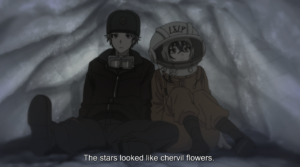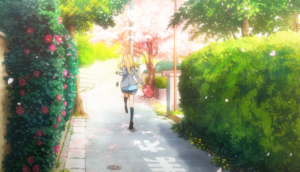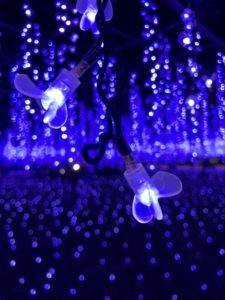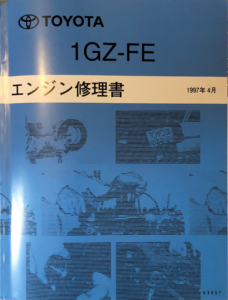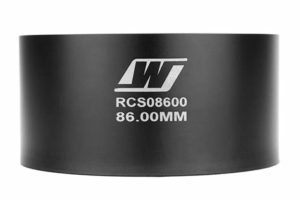
On the last day of 2021 I spent a bit of time looking through my photos and was shocked to realize memories I thought happened in 2021 were from 2019. Almost all significant recent memories were from 2019. 2020-2021 was a gaping hole.
2 years of some of the most useful years of my life were wasted.
I find the New Year to be relatively meaningless: If you have a goal you should start immediately rather than wait until some arbitrary date. That’s just using it as an excuse to procrastinate.
Nonetheless, New Year’s helped me notice something I’d been ignoring. I can’t let another year go wasted. I’m in my 20s and so is the calendar so to quote Mr. Musk:
“Let;s make the roaring 20’s happen!”
Making the roaring 20s happen
New Year’s is arbitrary and I’m not going to make up goals just because my phone screen says it’s 2022, but I do want to take a moment to focus on a few things I’ve been working on and will continue to focus on.
1. Train to be a Mage (Let me explain)
As far as I can tell, there’s no magic in this world. However…
“Engineering is the closest thing to magic that exists in this world.” Elon Musk
Sometimes I watch shows where characters get reincarnated into a world with magic and find myself wishing I could be one of the mages in the world. I envy those that put their all into their research/training to develop new techniques that influence the world and allow them to be heroes of the story despite being ridiculed and outcast for it early on.
After hearing this from him I realized we already exist in a world like that but don’t always appreciate it. Science and engineering is the magic of this world. A few examples:
-
- Alchemy: Chemistry
- Flying Carriage: Airplane
- Healing spell: Surgery and medicine
- Illusionary world: Virtual Reality
- Glowing communication orb: Cell phone
It’s just a matter of perspective. Maybe I can’t get on a broom and fly but I can get in a plane and do the same. I can even build the plane myself. In those worlds magic probably doesn’t seem too special to the average person similar to how hopping on a plane and ending up anywhere in the world doesn’t blow to many people’s mind.
My goal is to continue pushing myself to learn in as many fields as possible so I can apply that to creating things that are interesting and help advance humans. It’s way too easy to feel clever in one thing and stick to it. My goal is to avoid that, be greedy and learn everything I can, especially in difficult areas that others avoid so that we can make some magic!
2. Be a net Creator not A Net consumer
It’s too easy to just hole away in a room and work on things for personal enjoyment or challenge but never share them. It’s hard to put those ideas out there to help others, get feedback, and maybe learn something new.
Even though the chances someone reads this are slim to none, saving it on this site rather than a note in my phone is scary and it’s so tempting to make this a private post. I’ll continue working on fixing this avoidance by making the internet a two way medium for me, not just another thing to consume.
I’m not saying my goal is to be an internet star, but rather to open up on the things I’m working on so that I can meet others working on similar things, get feedback, help others, and make something that serves someone other than myself and do it better than I could alone.
3. Make an adventurer card and level up those skills!
Resumes are so boring that it hurts. If I didn’t know who Musk was and was handed his resume, there’s a good chance I’d still find it uninteresting, or just think he’s full of himself and lying. The goal of resumes seem to be to take something interesting, and condense it to something boring yet boastful with no proof.
I’ve been wondering how I could keep track of things I’ve done as well as my skills in an interesting way and actually back it up. The answer came to me in a stupid way: watching an Isekai anime where the character gets sent to another world as a spider and chooses some useless ability called appraisal that lets her investigate objects as well as see her own stats. Well, this skill turns out to be pretty useful.
How? Well, rather than fighting randomly and hoping you improve, you can look at your skill list and say hmm, this would be useful if I were better at it so let’s work on it. Or maybe you find yourself in an unexpected situation not knowing what to do, but instead of panicking you open up your list and find something you forgot you can do that’s actually super helpful.
A resume should be able to do this, but it sucks at it, and it’s boring! I created this site to accomplish number 2, but it will also help with this goal. I’ll also use it to create my own skills page where I can track skills I have or would like to add as well as my progress on them.
4. Stop being a perfectionist: wage war against despair
The past two years if feels like doom and gloom is the narrative being pushed by the most vocal of people. It’s easy to let this creep in and influence your thoughts.
The past two years are a hole in my memory, and part of that might be that I subconsciously chose to forget. I started working and hate almost every minute of it. Despite that, I find myself two years later in the same spot with no idea how. Recently I think I figured it out and plan to work on it.
“In the end…Everybody says ‘I’m bored’ or ‘Isn’t there anything interesting out there?’ like pet phrases. But in reality none of them are really looking for a change.” Sakuta Azusagawa
I heard this a year or so ago, and despite my best efforts to not be like those people. I was. It was only a few weeks ago I understood the reason why people are like this. It sounds dramatic, but it’s despair, and the cause of it is a form of perfectionism.
I’ll start with this: Perfectionism is the enemy of progress. I’ve heard it many times but it had no meaning until now.
I was talking to my boss after being overloaded at work for so long that I burnt out and was ready to quit. He listed out some other possibilities rather than outright quitting but I was so set on quitting I couldn’t consider them. Then, during the conversation he asked me something about what made me hate the work that really stuck:
“have you ever thought if maybe you’re a perfectionist?” My gut reaction was no. Work was stressful but I knew we just had to get the project done and improve over time, not perfect it. I later realized this question had far more general implications:
Perfectionism in life, not just what I was working on currently
Senior year of high school I had to pick a major, and as a result a career. I probably haven’t moved forward since I had to make that choice. There’s endless choices for careers with information readily available to dive into any of them, how do I pick one and not regret ignoring another? That’s perfectionism in disguise. The rational approach is to pick one, try it, and choose another if you don’t like it. The perfectionist will instead agonize endlessly over the right choice and float through life, or choose one yet never be satisfied with the present as it falls short of perfection. Your profession ends up being despair.
Despair is it’s own nasty thing and brings us back to the end of the quote “but in reality none of them are really looking for a chance.” At first it just seems like these people like to complain about everything but secretly like their situation but I realized it’s the opposite. These high schoolers hate their situation, but in school there’s only ever one right answer. People are taught perfectionism without realizing and are lead to think that 100% is the goal.
But in real life a 100% score is just some imaginary concept. There’s no one answer because everything lies on a spectrum with tradeoffs. So when exploring what their options are, nothing seems right because there’s no perfect option. This is despair. All paths seem closed off so they spend their days complaining, but don’t want to change because they feel they can’t.
I resolve to battle perfectionism so I can move forward for once.
Final Thoughts
These goals shouldn’t be considered separate, and all feed into one another. For example I’d like to avoid despairing, but it’s easy to lose confidence when you’re stuck. Having that adventurer card gives me something to look at and remember: oh yeah, I’m a mage with all these cool skills I can use, whereas without it I might ignore those skills and curse my uselessness instead. It’s also impossible to judge yourself fairly, so number 2 is important for evaluating things fairly and finding things you thought you sucked at but are good at and vice versa. Working in a bubble is a bad idea! When it goes pop it will not end well!
Good luck future self or anyone who reads this!
-Oddity

